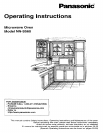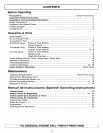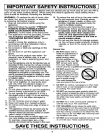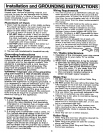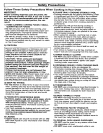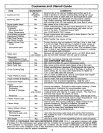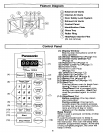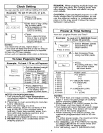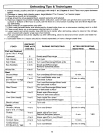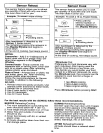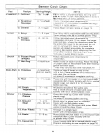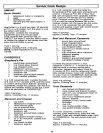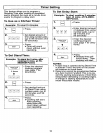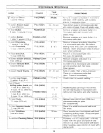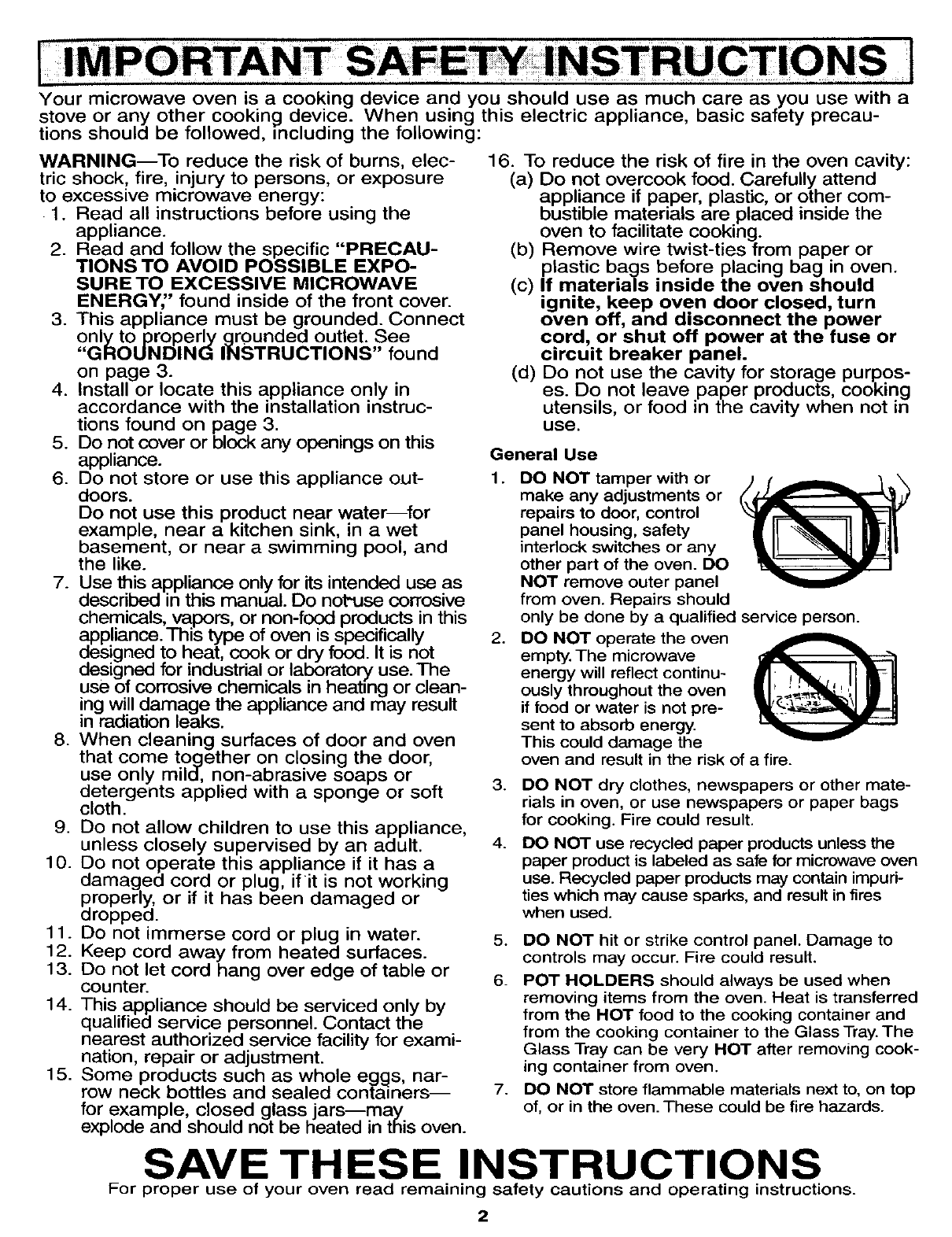
Your microwave oven is a cooking device and you should use as much care as you use with a
stove or any other cooking device. When using this electric appliance, basic safety precau-
tions should be followed, including the following:
WARNING--To reduce the risk of burns, elec-
tric shock, fire, injury to persons, or exposure
to excessive microwave energy:
•1. Read all instructions before using the
appliance.
2. Read and follow the specific "PRECAU-
TIONS TO AVOID POSSIBLE EXPO-
SURE TO EXCESSIVE MICROWAVE
ENERGY;' found inside of the front cover.
3. This appliance must be grounded. Connect
onlyto properly grounded outlet. See
"GROUNDING INSTRUCTIONS" found
on page 3.
4. Install or locate this appliance only in
accordance with the installation instruc-
tions found on page 3.
5. Do not cover or block any openings on this
appliance.
6. Do not store or use this appliance out-
doors.
Do not use this product near water--for
example, near a kitchen sink, in a wet
basement, or near a swimming pool, and
the like.
7. Use this appliance only for its intended use as
described in this manual. Do not'use corrosive
chemicals, vapors, or non-food products in this
appliance.This type of oven is specifically
designed to heat, cook or dry food. It is not
designed for industrial or laboratory use. The
use of corrosive chemicals in heating or clean-
ing will damage the appliance and may result
in radiation leaks.
8. When cleaning surfaces of door and oven
that come together on closing the door,
use only mild, non-abrasive soaps or
detergents applied with a sponge or soft
cloth.
9. Do not allow children to use this appliance,
unless closely supervised by an adult.
10. Do not operate this appliance if it has a
damaged cord or plug, if it is not working
properly, or if it has been damaged or
dropped.
11. Do not immerse cord or plug in water.
12. Keep cord away from heated surfaces.
13. Do not let cord hang over edge of table or
counter.
14. This appliance should be serviced only by
qualified service personnel. Contact the
nearest authorized service facility for exami-
nation, repair or adjustment.
15. Some products such as whole eggs, nar-
row neck bottles and sealed containers--
for example, closed glass jars--may
explode and should not be heated in this oven.
16. To reduce the risk of fire in the oven cavity:
(a) Do not overcook food. Carefully attend
appliance if paper, plastic, or other com-
bustible materials are placed inside the
oven to facilitate cooking.
(b) Remove wire twist-ties from paper or
plastic bags before placing bag in oven.
(c) If materials inside the oven should
ignite, keep oven door closed, turn
oven off, and disconnect the power
cord, or shut off power at the fuse or
circuit breaker panel.
(d) Do not use the cavity for storage purpos-
es. Do not leave paper products, cooking
utensils, or food in the cavity when not in
use.
General Use
.
DO NOT tamper with or
make any adjustments or
repairs to door, control
panel housing, safety
interlock switches or any
other part of the oven. DO
NOT remove outer panel
from oven. Repairs should
.
.
4.
only be done by a qualified service person.
DO NOT operate the oven
empty. The microwave
energy will reflect continu-
ously throughout the oven
if food or water is not pre-
sent to absorb energy.
This could damage the
oven and result in the risk of a fire.
DO NOT dry clothes, newspapers or other mate-
rials in oven, or use newspapers or paper bags
for cooking. Fire could result.
DO NOT use recycled paper products unless the
paper product is labeled as safe for microwave oven
use. Recycled paper products may contain impuri-
ties which may cause sparks, and result in fires
when used.
5. DO NOT hit or strike control panel. Damage to
controls may occur. Fire could result.
6. POT HOLDERS should always be used when
removing items from the oven. Heat is transferred
from the HOT food to the cooking container and
from the cooking container to the Glass Tray. The
Glass Tray can be very HOT after removing cook-
ing container from oven.
7. DO NOT store flammable materials next to, on top
of, or in the oven. These could be fire hazards.
SAVE THESE INSTRUCTIONS
For proper use of your oven read remaining safety cautions and operating instructions.
2



